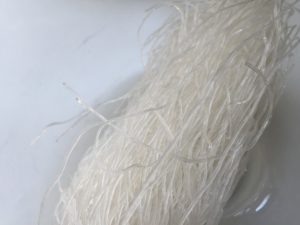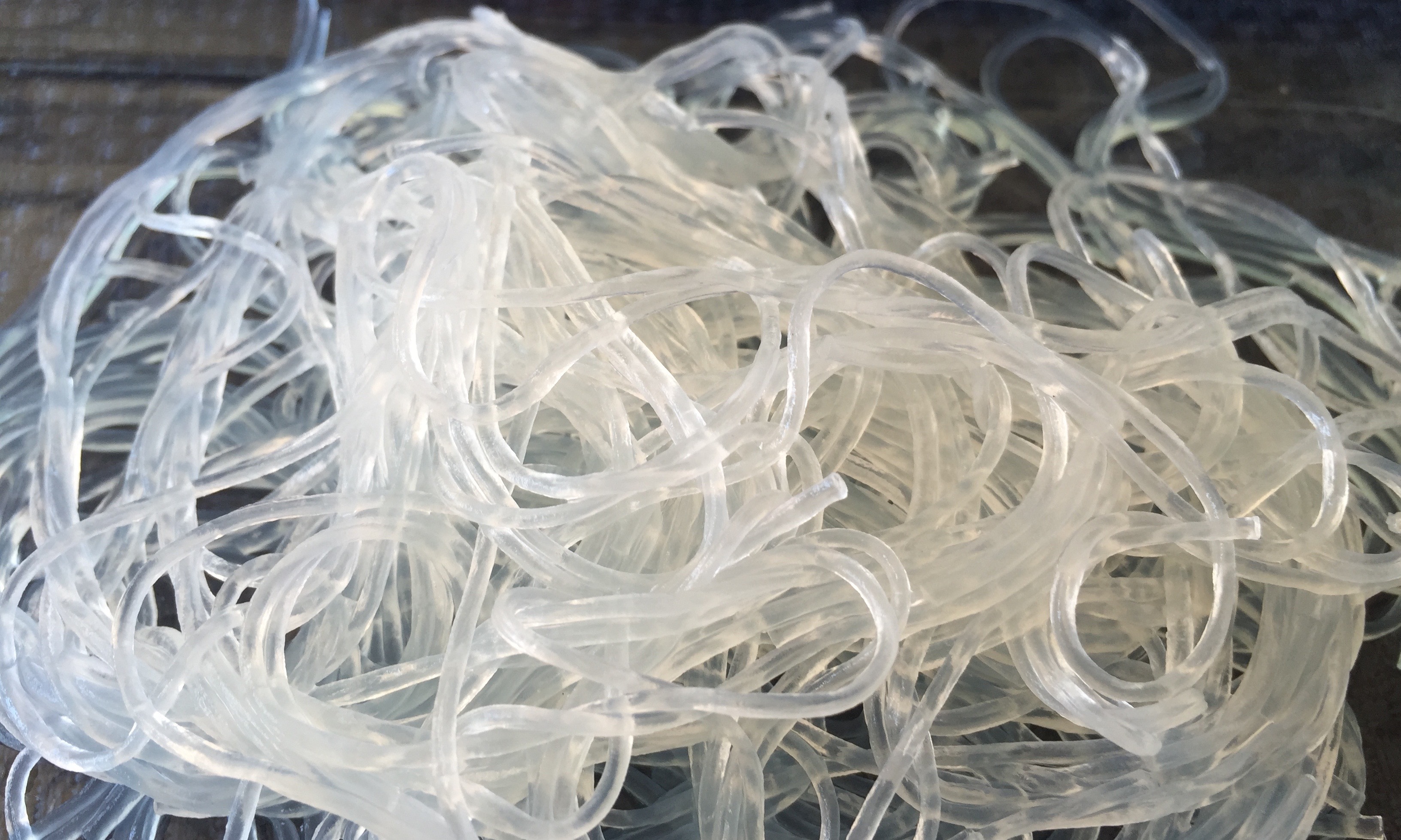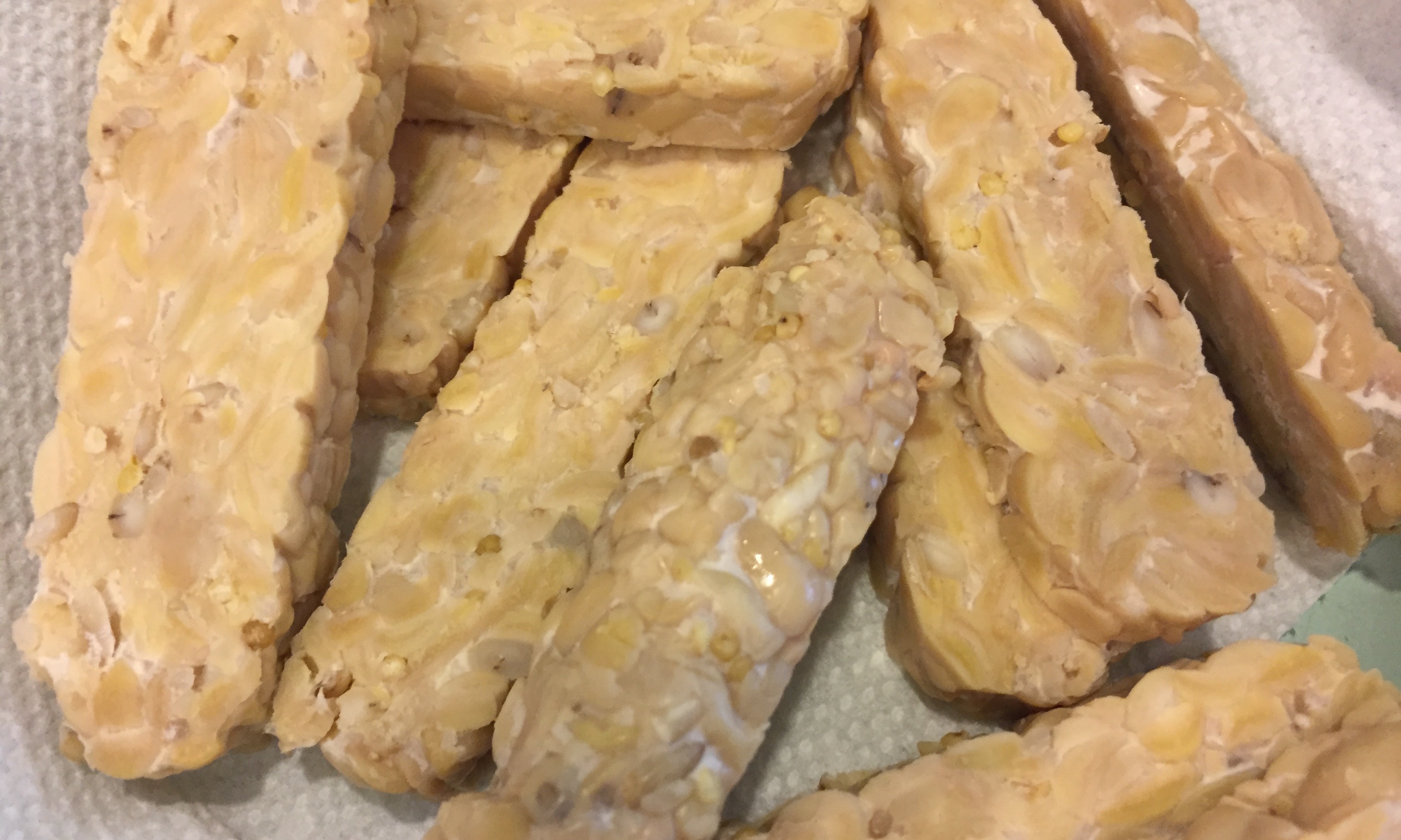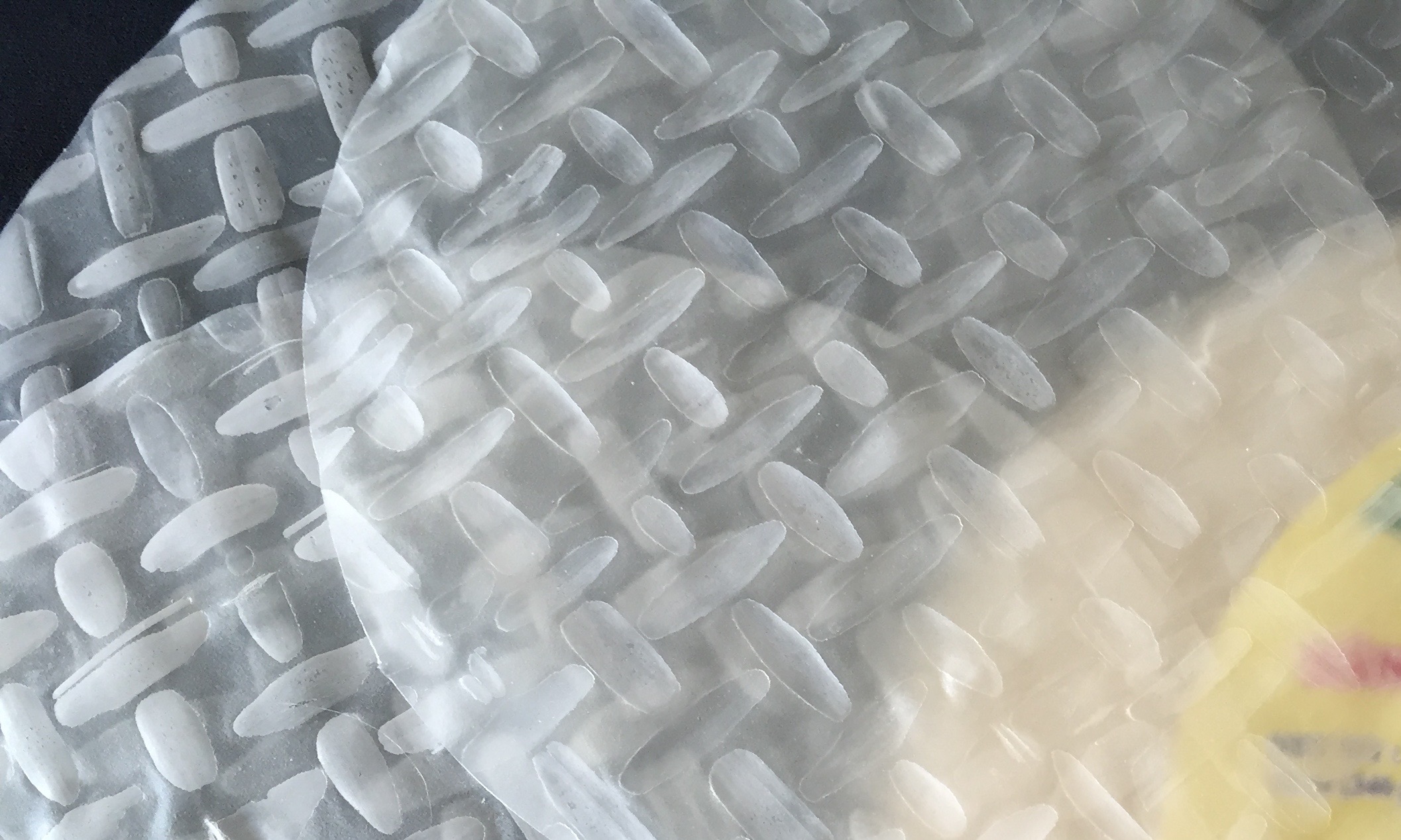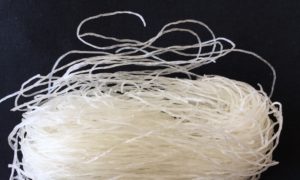
It’s easy to get fensi, or dried bean thread noodle, mixed up with mifen, dried rice vermicelli. Don’t get them confused.
In their packages, when dry, both are white. On closer inspection, the rice noodle, made with rice flour, is whiter than the bean thread noodle, made with mung bean.
Once it is soaked and prepped for cooking, the bean thread noodle is transparent and elastic and springy whereas rice vermicelli is white and the noodle is soft and can be pressed flat. They also taste different and are used for different purposes.
In Chinese cooking, we use bean thread noodles (or cellophane noodles) to add to stir fry meat and vegetables dishes, as well as soups. Bean thread noodles are never fried like fried noodles in Chinese cooking. But in Singapore, we use it in some soup noodles.
Rice vermicelli, or mifen, is used in fried or soup noodle dishes.
Buying Bean Thread Noodle
To be sure you are getting the right noodle, bean thread noodle comes in a package that traditionally had a pink net over it. Nowadays, I’ve seen them sold without this signature pink netting.
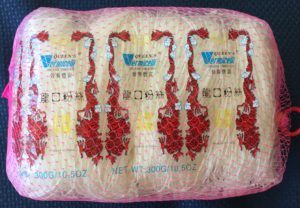
Traditionally, when fried with vegetables the bean thread noodle we use is the finest one, about the thickness of angel’s hair when cooked. There are cellophane noodles that are thicker, like those used in Korean Chap Chae.
To make things confusing, bean thread noodles, as shown in this package, is sold as vermicelli. Look closely and see that under it says it is bean thread.
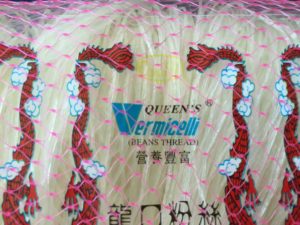
When you look through and open the package, the bean thread noodle comes in small bunches, small enough to hold in your hand. I wish they made them smaller because most times, even their small bunch is too much for my use. They’re pokey and stiff and hard to break off. Rice vermicelli, on the other hand, come in large flat panels.
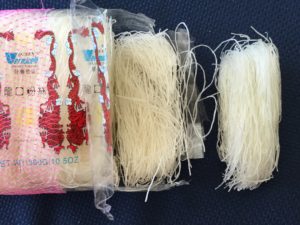
Prepping bean thread noodle
Soak noodle in cold water until it softens. In a hurry, you may also use warm water. It doesn’t need to be completely tender because it will cook further when added to your stir fry. Drain before use or just lift off from water.
